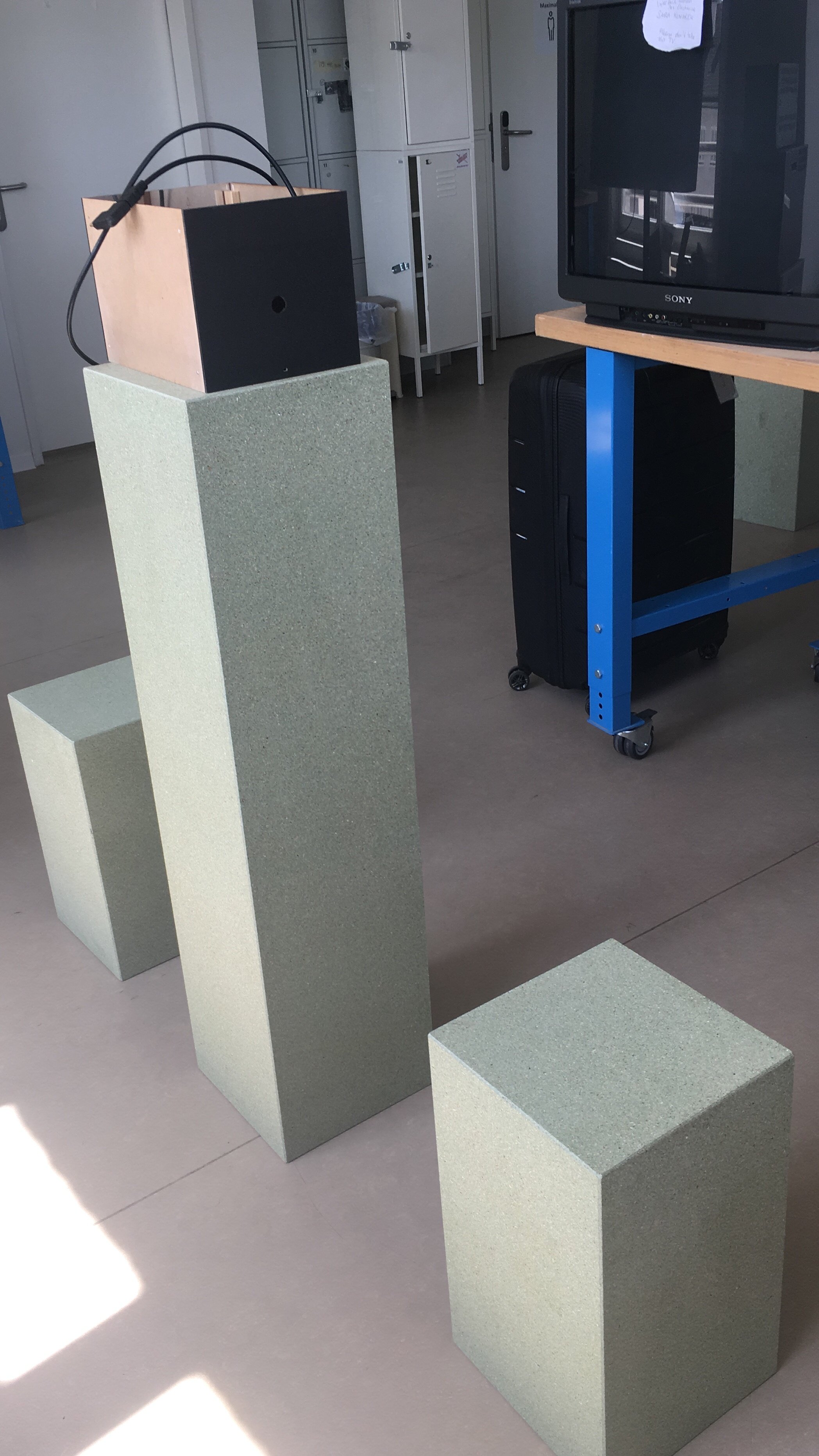SenriAn
千利庵
Not only our memories, but the things we have forgotten are ‘housed.’ Our soul is an abode. And by remembering ‘houses’ and ‘rooms,’ we lead to ‘abide’ within ourselves.
Gaston Bachelard
The poetics of space (1969)
SenriAn is a personal exploration of subjective space, memory, and migration. This Peep Media installation explores the phenomenon of reminiscence by displaying AI-generated images from a dataset composed of the artist’s Chinese ink paintings and family photographs from her childhood. Can these digitally generated images reveal the mutable nature of memories?
Inside a box, the artist aims to reconstruct SenriAn, her grandparents’ Japanese tea house, by using a personal dataset to unfold her faint memories through AI-generated images. These images are revealed only when two spectators peep together, referring to the nature of memories, which revive with each transmission.
“[R]emembering is something which occurs in a world of things, as well as words, and that artefacts play a central role in the memories of cultures and individuals.”
“Mnemotechnology: Technology that systematically orders memories.”
“Technologically-Mediated Memory: [A]ny technology that also encodes, stores, and retrieves autobiographical information.”
Our daily life runs parallel to the flow of data produced by us and our environment. The digital world constantly expands and transcribes our lives into data: our actions, emotions, curiosities. But what about what is stored inside us, what we treasure, our memories?
Memories have become digitally processed and stored data. How will we remember in the future? Will these memories have the same emotional and sensory dimension? Algorithms on social media such as Facebook, choose users' moments and memories to create personalized presentations. As a result, the evocation of memories is no longer an intimate or spontaneous experience. The evocation of memories seems to be now artificial, digital, mediated, and public.
SenriAn explores memories as data and how these can be reconstructed through AI. Are these "new" memories telling the original story? Do memories always stay the same? Or do they continuously mutate over time with each evocation, with each sharing?
Inspiration
Sasaki’s grandparents left Japan in 1927 and chose Peru as their new homeland. SenriAn is the name of the Japanese tea house they constructed in Lima in 1973. In 2008, after her grandparents passed away, the tea house was dismantled. Since then, SenriAn is just part of the family memories, an intangible place (Figure 1. Photo from the family archive / Figure 2. Photo by Pauchi Sasaki).
Peep Media in Digital Times
This project is part of Sasaki’s latest artistic research on Peep Media in digital times. She suggests that Peep Media and one-to-one performances today are a contrasting response to a multitasking-hyperconnected lifestyle in which it is increasingly difficult to enjoy privacy, intimacy, and unmediated interpersonal relationships (Figure 3. Peep box sketch).
Exhibition
2022 / NOVA Festival at Pavilion 32 Goethe Institut, Bucharest, RO
2021 / #1 WIP Showcase at CYENS Centre of Excellence, Nicosia, CY
2021 / Ars Electronica Festival 2021, Interface Cult Exhibition from Interface Cultures, AT
Premiere @Kunstuniversität Linz @Ars Electronica Festival 2021
Development process
Technical details
Computer, monitor 10", microcontrollers, sensors, lighting system, and a box 18 x 18 x 26 cm. Running software: Processing and Arduino.
Credits
Concept, script, scenography and lighting design, visuals, and electronics by Nomi Sasaki.
This project was developed with the ÖH Project Grant 2021.
Dedicated to
My father and grandparents.
References
Bachelard, G. (1969). The poetics of space. Beacon Press.
Jullien, F. (2007). The impossible nude. University of Chicago Press.
Jullien, F. (2009). The great image has no form, or on the nonobject through painting. University of Chicago Press.
Konrad, A., Isaacs, E., & Whittaker, S. (2016). Technology-mediated memory: is technology altering our memories and interfering with well-being?. ACM Transactions on Computer-Human Interaction (TOCHI), 23(4), 1-29.
Prey, R., & Smit, R. (2018). “From Personal to Personalized Memory: Social Media as Mnemotechnology.” In Z. Papacharissi (Ed.), A Networked Self and Birth, Life, Death (1 ed., pp. 209-223). (A Networked Self). Routledge, Taylor and Francis group.
Radley, A. (1990). “Artefacts, Memory and a Sense of the Past.” In D. Middleton and D. Edwards (eds) Collective Remembering (London: Sage), pp. 46–59.
Turkle, S. (2015). Reclaiming conversation: The power of talk in a digital age. Penguin.
Urry, John. (1996). “How Societies Remember the Past.” In Theorizing Museums: Representing Identity and Diversity in a Changing World, edited by Sharon Macdonald and Gordon Fyfe, 45–65. Oxford: Blackwell.












